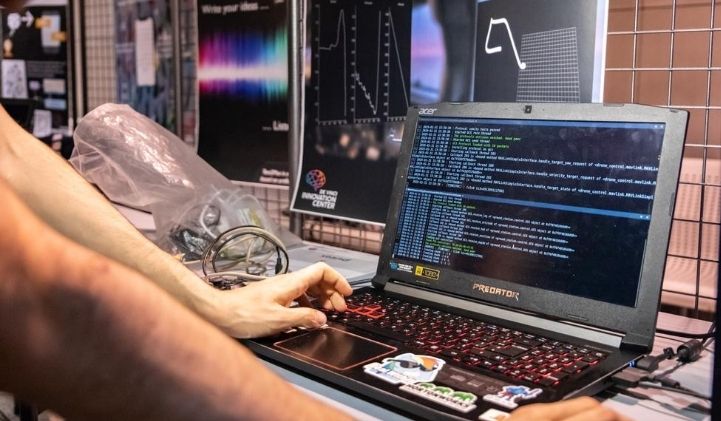Robotics really is the field of the future! Scientists have recently come up with tiny little robots that can move on four feet. Almost invisible, those robots can be used to explore biological environments.
More than a million of those robots have already been produced.
How Do Those Robots Work?
“Those robots are so small that they are almost invisible. They have four feet powered by embedded solar cells. By sending a laser light on those photovoltaic cells, we can move the legs, which makes the robot walk.” – Marc Miskin from the University of Cornell for AFP.
Each robot is made of a simple circuit made from silicon photovoltaic cells for the body and four electrochemical actuators for the feet. According to the study, those microrobots of 0.1 millimeters are strong and can survive in acidic environments and support temperature variations of more than 70 C°.
For now, the robots need to be a bit more polished: they are indeed slow and not easy to manipulate. However, scientists are optimistic regarding the future of their creation.
What Are Those Robots Made For?
According to scientists, these robots could be used to be injected under the skin via hypodermic needles to explore biological environments or to help material science, particularly at the microscopic scale.
“Fifty years of electronic miniaturisation have led to remarkably tiny technologies: you can now build captors, computers, and memory in a very small space. But if you want a robot, you need actuators, moving pieces that work without taking with them sources of energy that would be too voluminous or heavy.” – Marc Miskin.
Scientists would need to join the robots to microelectronic components that would allow them to build autonomous microrobots. According to Allan Brooks and Michael Strano from the Institute of Technology of Massachusetts, “Despite not being autonomous in their actual form, they can be seen as a platform to which we could attach ‘brains'”. But, as Marc Miskin, says, “there is still a long way to go.”
Interested in Engineering? Check out ESILV’s programmes.







